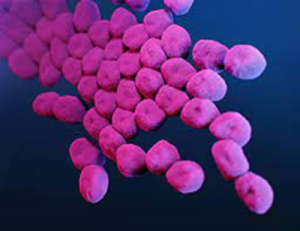Acinetobacter baumannii is a gram-negative bacterium that is found in the environment including
drinking water, soil and sewage. It can also be found on the skin of some healthy individuals. A.baumannii infections in the community are very rare and almost exclusively occur in the hospital setting. It is an opportunistic pathogen affecting those with underlying health problems and infection is often associated with invasive or indwelling medical devices.
Infections can be very difficult to treat as A.baumannii is intrinsically resistant to many antimicrobial agents and can acquire resistance easily. This includes increasing resistance to the carbapenem class of antibiotics which are often the last resort for treatment.
